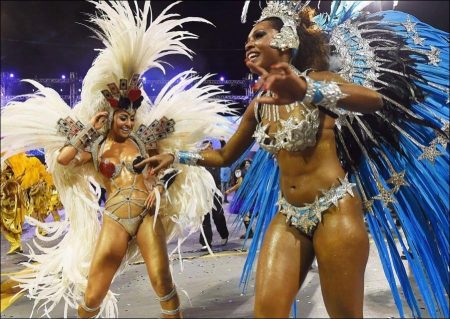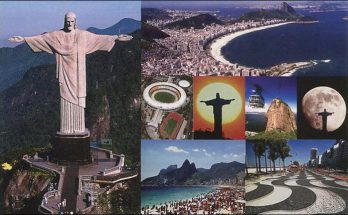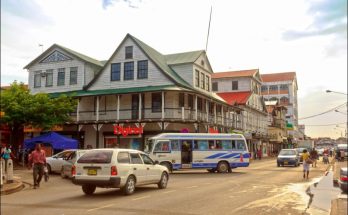The Carnival in Rio de Janeiro is a world famous festival held before Lent every year and considered the biggest carnival in the world with two million people per day on the streets. The first festivals of Rio date back to 1723.
The typical Rio carnival parade is filled with revelers, floats and adornments from numerous samba schools which are located in Rio (more than 200 approximately, divided into 5 leagues/ divisions). A samba school is composed of a collaboration of local neighbours that want to attend carnival together, with some kind of regional, geographical common background.
There is a special order that every school has to follow with their parade entries. Each school begins with the “comissão de frente” (“Front Commission” in English), that is the group of people from the school that appear first. Made of ten to fifteen people, the “comissão de frente” introduces the school and sets the mood and style of their presentation. These people have choreographed dances in fancy costumes that usually tell a short story.
Following the “comissão de frente” is the first float of the samba school, called “abre-alas” ( “Opening Wing” in English ). These are followed by the Mestre-sala and Porta-Bandeira (Room Master and Flag Carrier), with one to 4 pairs, one active and 3 reserve, to lead the dancers, which include the old guard veterans and the “ala das baianas”, with the bateria at the rear and sometimes a brass section and guitars.
Street Carnival
As the parade is taking place in the Sambadrome and the balls are being held in the Copacabana Palace and beach, many carnival participants are at other locations. Street festivals are very common during carnival and are highly populated by the locals. Elegance and extravagance are usually left behind, but music and dancing are still extremely common.
Anyone is allowed to participate in the street festivals. Bandas and blocos are very familiar with the street carnival especially because it takes nothing to join in on the fun except to jump in. One of the most well known bandas of Rio is Banda de Ipanema. Banda de Ipanema was first created in 1965 and is known as Rio’s most irreverent street band.
Incorporated into every aspect of the Rio carnival are dancing and music. The most famous dance is carnival samba, a Brazilian dance with African influences. The samba remains a popular dance not only in carnival but in the ghettos outside of the main cities. These villages keep alive the historical aspect of the dance without the influence of the western cultures.
Music is another major aspect of all parts of carnival. As stated by Samba City, “Samba Carnival Instruments are an important part of Brazil and the Rio de Janeiro carnival, sending out the irresistible beats and rhythms making the crowd explode in a colourful dance revolution fantasy fest!”[5] The samba that is found in Rio is batucada, referring to the dance and music being based on percussion instruments. It “is born of a rhythmic necessity that it allows you to sing, to dance, and to parade at the same time.”[6] This is why the batucada style is found in most all of Rio’s street carnivals.
Street parades, blocos and bandas take place throughout the city of Rio during Carnival, the most famous and largest carnival celebration of the world. There can be more than 300 bandas taking place at any given point in time. While the biggest street party takes place right outside the Sambadrome, the largest organized street dance is typically found on Cinelândia Square in Rio’s Centro.
In 2012, more than 2 million revelers took to the streets of Rio de Janeiro to participate in the Cordão da Bola Preta bloco. According to police estimates, more than 5 million people attended a bloco during Rio Carnival 2012 and there was not one reported incident of crime. When the Sambadrome was built in 1984, it had the side-effect of taking street parades from the downtown area to a specific, ticketed performance area. Some samba schools have since been motivated by an agenda that focuses on regaining public space, and using the carnival tradition to occupy the streets with parades or blocos. Many of these represent a local community of the area but are open to all.
Carnival Dates
The Carnival begins on Friday and ends on Ash Wednesday, but the Winners’ Parade happens on the Saturday after the carnival ends.
February 28 to March 4, 2014
February 13 to February 17, 2015
February 6 to February 10, 2016
February 24 to March 1, 2017
February 9 to February 14, 2018
March 1 to March 6, 2019
February 21 to February 26, 2020
February 12 to February 17, 2021
Visits: 89




